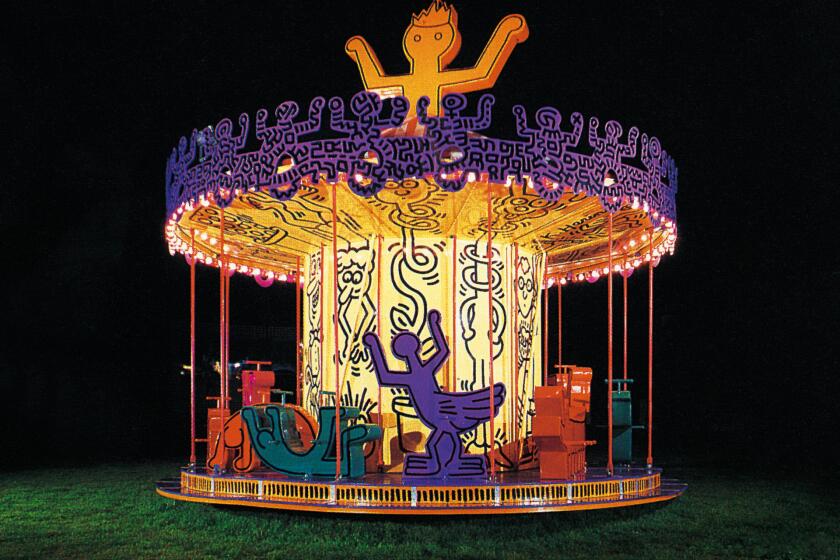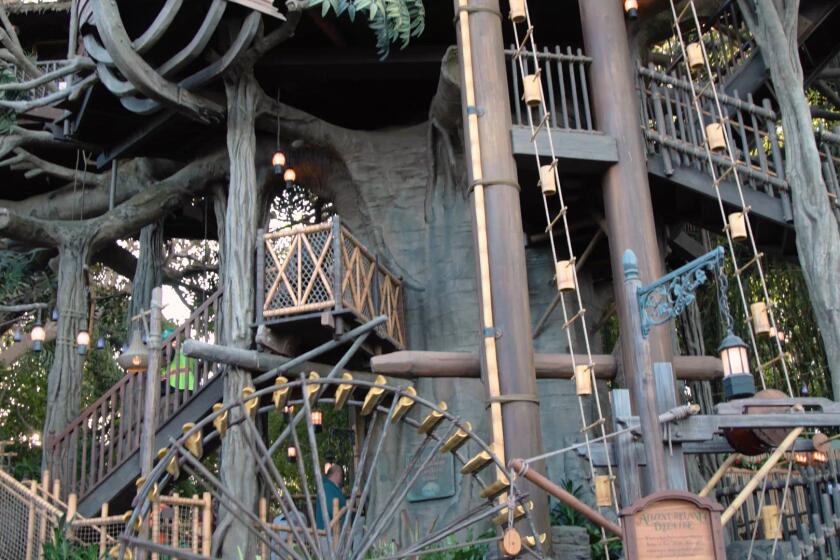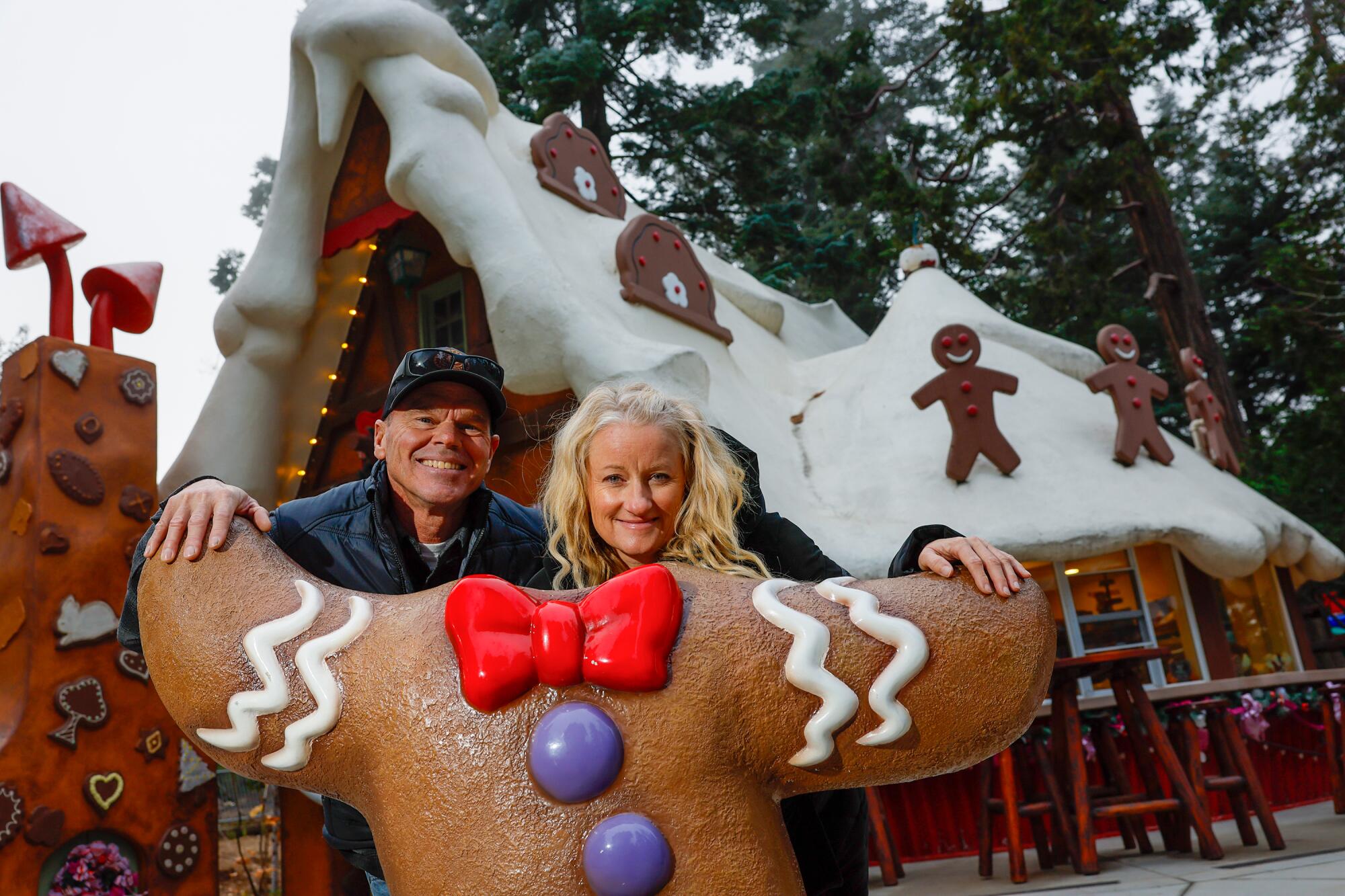
- Share via
Santa’s Village had become a ghost town, closed for nearly two decades. Rides had been auctioned off, much of its electrical equipment was stolen and bark beetle-infested trees — destined for an incinerator — had once taken up residence in its parking lot.
But after an extensive cleanup progress, the park, built in 1955 in Skyforest near Lake Arrowhead, was ready again for a close-up. A grand reopening was set for early December 2016.
Santa’s house had been remodeled, transformed from an arguably awkward bedroom setting to a cozy, wood-filled nook, and the once kid-focused amusement park had been refashioned into a participatory-first playground with an emphasis on mountain biking and light sporting activities, with a zipline, archery and ax throwing among them. Almost everything, its new owners thought, had been accounted for. Everything, that is, except power surges.
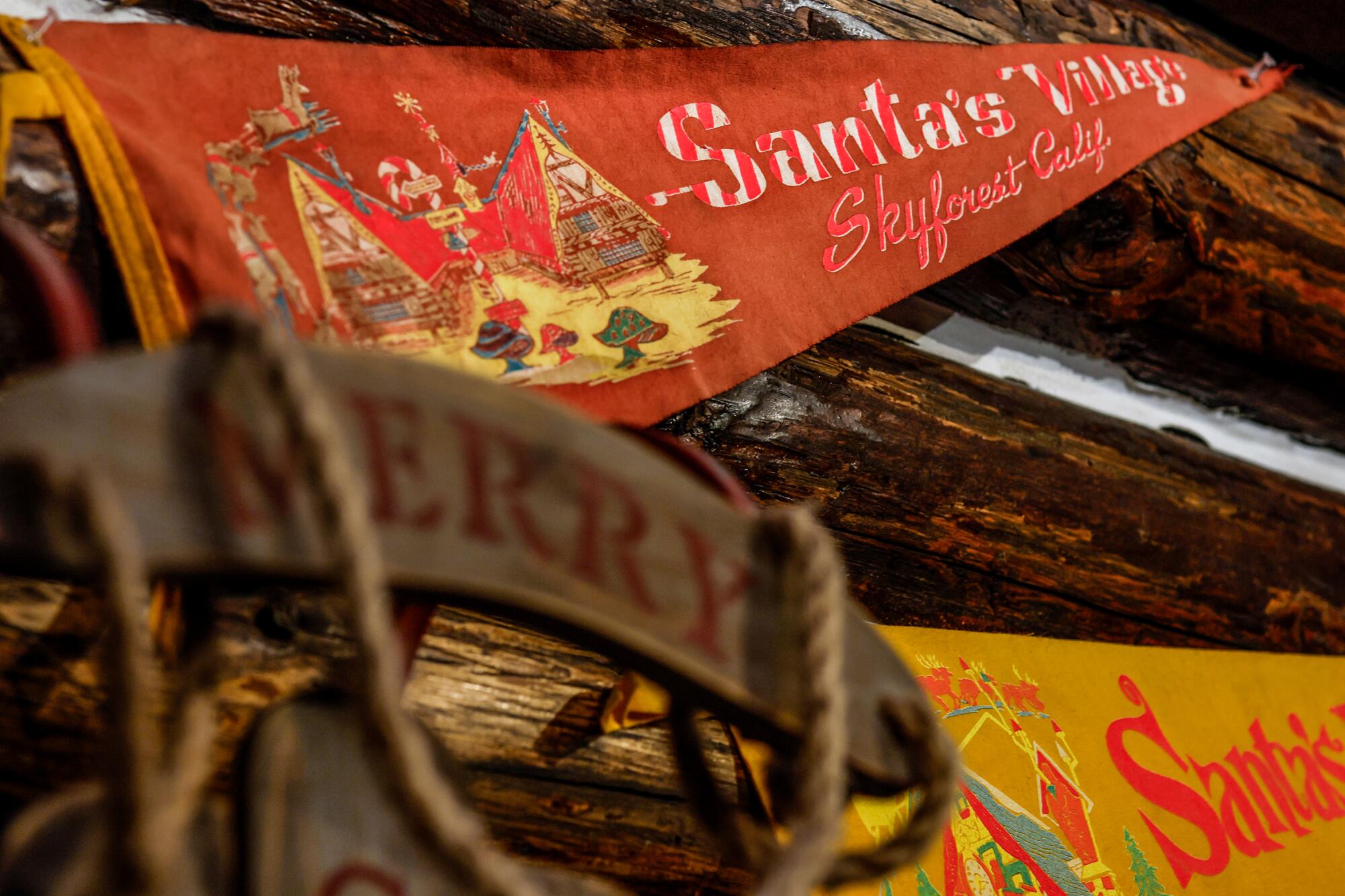
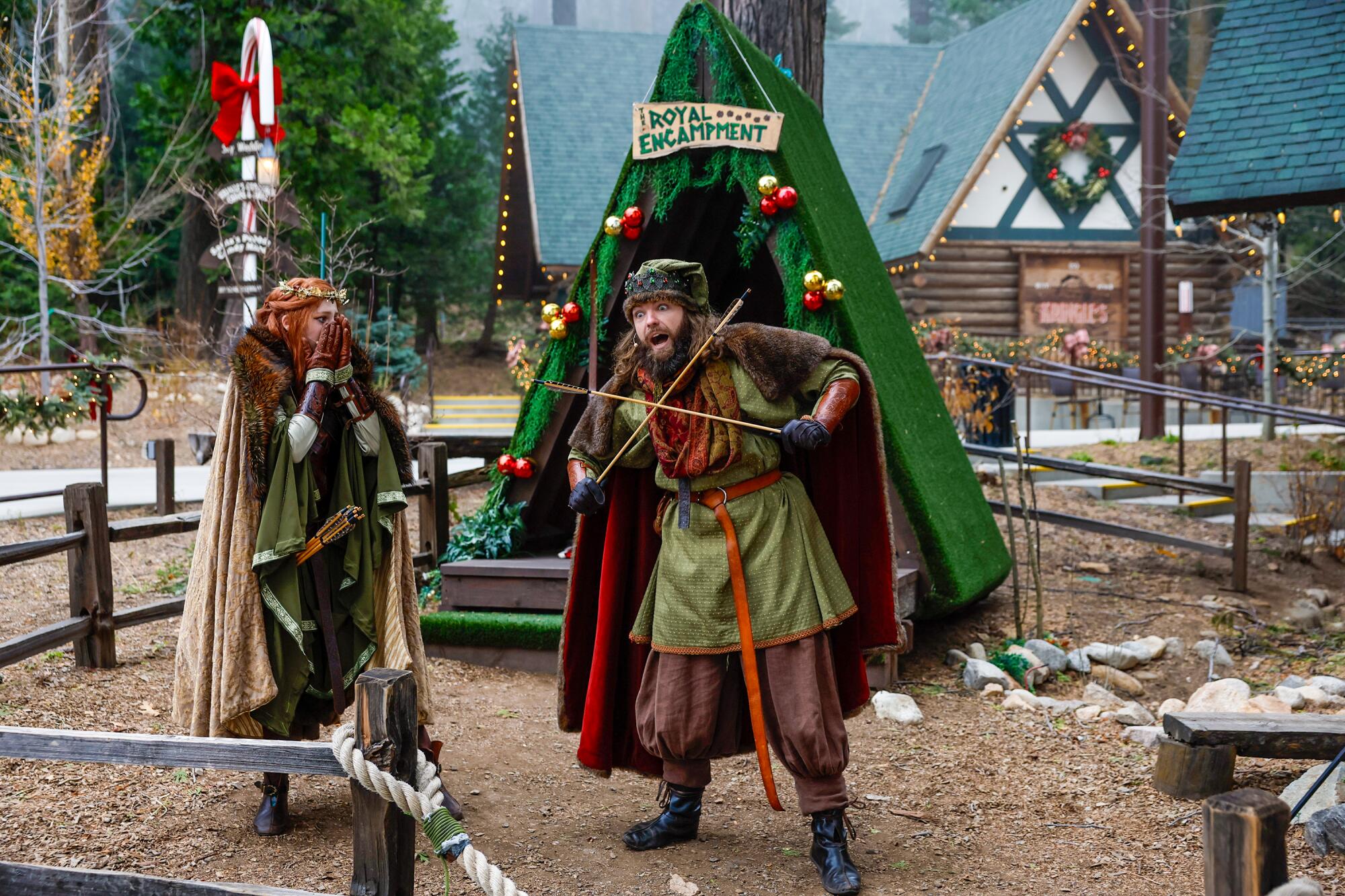
“All the kitchens are running. The heaters are running. The lights are running. We’re running this thing at its theoretical level,” says Bill Johnson, 57, who owns the park, now christened Skypark at Santa’s Village, with his wife, Michelle, 51. “But some of this infrastructure is original, and it was super cold and windy, and everyone was scrambling, plugging in wall heaters. So we’re pulling an extra 13 to 20 amps, and we end up boiling and blowing the transformer.”
And with it came an explosion of transformer oil near the front of the park. No one was injured, but power was lost and everyone was sent home.
For the Johnsons, it was a crudely abrupt lesson in operating a theme park, one of many they’d learn over the next decade of wrestling with bureaucratic, construction and creative challenges. The couple are outdoor lovers who dreamed of turning Santa’s Village into a forested, mountain bike wonderland, a goal that has largely been accomplished.
But after purchasing the land in 2014, they found themselves the unlikely owners of a destination that many in Southern California had a deep, nostalgic attachment to. Thus, their plans changed and the couple, who recently celebrated their 30th wedding anniversary, became unexpected themed entertainment entrepreneurs.
“We don’t have any experience in the theme park industry or, like, any of it, really,” Michelle says.

Santa’s Village predates Disneyland by about six weeks, opening on Memorial Day weekend 1955. It was an instant hit, a roadside-style attraction that had grand amusement park ambitions. The Times reported in 1956 that Santa’s Village drew tens of thousands of visitors to the small mountain town in its first year and a half of operation. The star opening-year attractions, according to this paper, aside from Mr. and Mrs. Claus, were a train that led guests through storybook panoramas — think Mary and her little lamb, Hansel and Gretel — as well as toy shops, candy making and a reindeer- or horse-driven sleigh (it depends on who’s doing the telling, but at some point the ride dropped the live animals).
It had a hand-built, mom-and-pop charm, and over the years added a bevy of characters as well as a monorail with bee-shaped carriages that hung from the singular track, the latter the centerpiece of its small arsenal of carnival-like attractions. As it aged, so did its kitschy charm as animals roamed the grounds amid Northwoods-style cottages painted in garish pastels. It was Christmas year-round, but also not, as today a gingerbread-influenced candy shop was once known as the Good Witch’s Bakery.
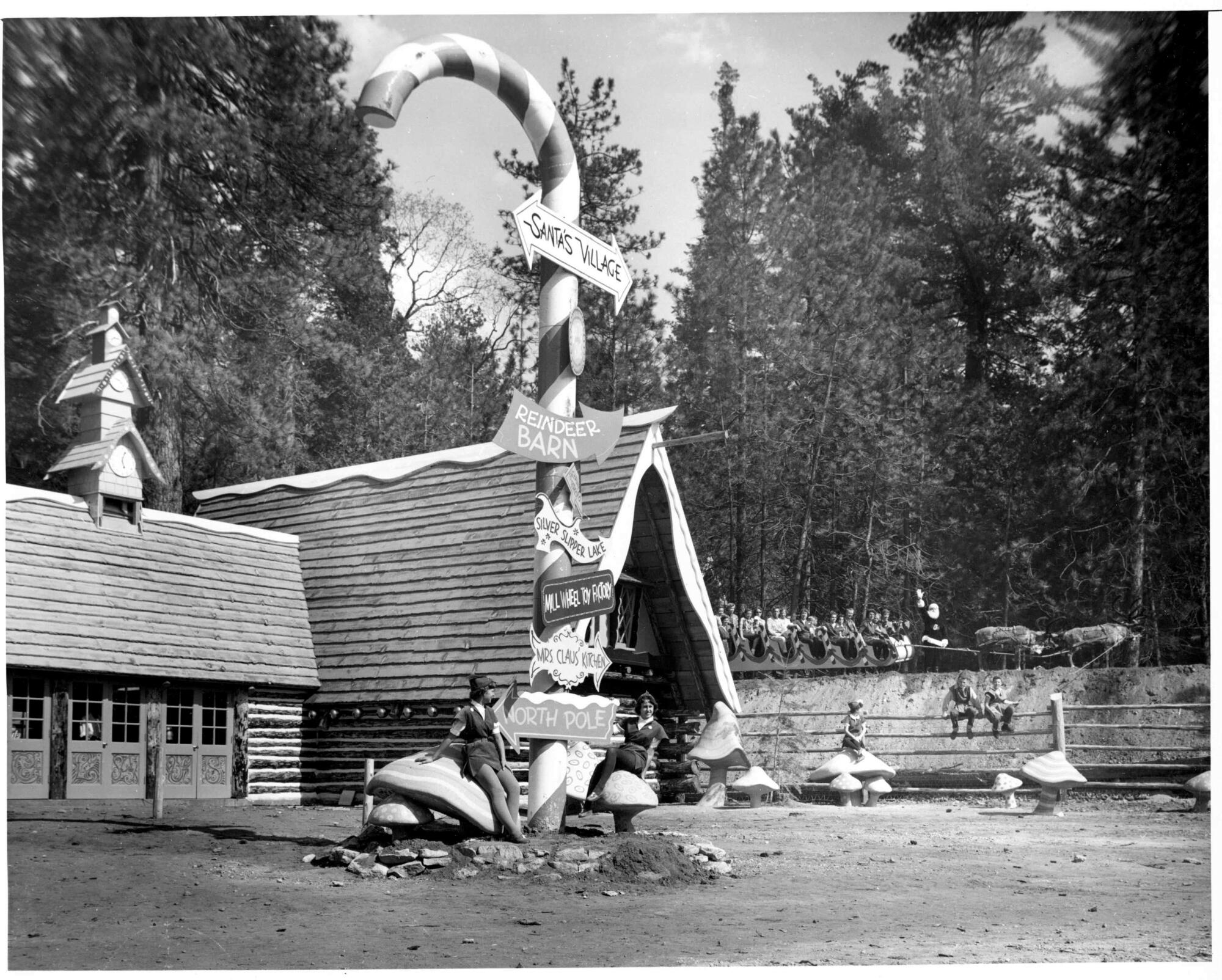
“It was kind of like a Tim Burton Christmas without the Gothic influence,” says Scott Rogers, a game designer and former Walt Disney Imagineer, describing the approachable weirdness of Santa’s Village. Rogers says it fit into a Southern California mind-set that birthed such creations as hot dog-shaped eateries or the barrel structure — and backyard bulldog — of L.A. bar the Idle Hour. “It was the tail end of Route 66. I genuinely miss that kind of weirdo, creative spirit. It was a bespoke little gem of a place.”
And it had a very targeted audience. Eileen Strom, 63, grew up going to Santa’s Village — her great uncle long worked as one of the park’s Santas. Today, Strom herself plays the role of Mrs. Claus in her current place of residence outside of San Antonio, Texas. “At Santa’s Village, everything was for little kids, 12 and under,” she says.
With a Keith Haring carousel and a Jean-Michel Basquiat Ferris wheel, Luna Luna aims to show the world that amusement parks should be taken seriously as an art-driven space.
“When you came in there was old-fashioned cars, and you went through a storybook land, Mother Goose-type ride. We loved the donkeys and the donkey ride. We liked seeing reindeer. It was scaled down. And then there was a crooked house and you went down a slide and were in an enclosed area with goats. You had to make sure they weren’t eating your mittens.”
Santa’s Village also wasn’t without its share of bad luck during its initial 43 years. The park was the idea of Southern California developer Glen Holland, who, according to The Times’ archives, had the idea for Santa’s Village after reading a Saturday Evening Post article about a similar holiday-themed space on the East Coast. He hired J. Putnam Henck, a general contractor, to build the 15-acre park on land that the Henck family owned.
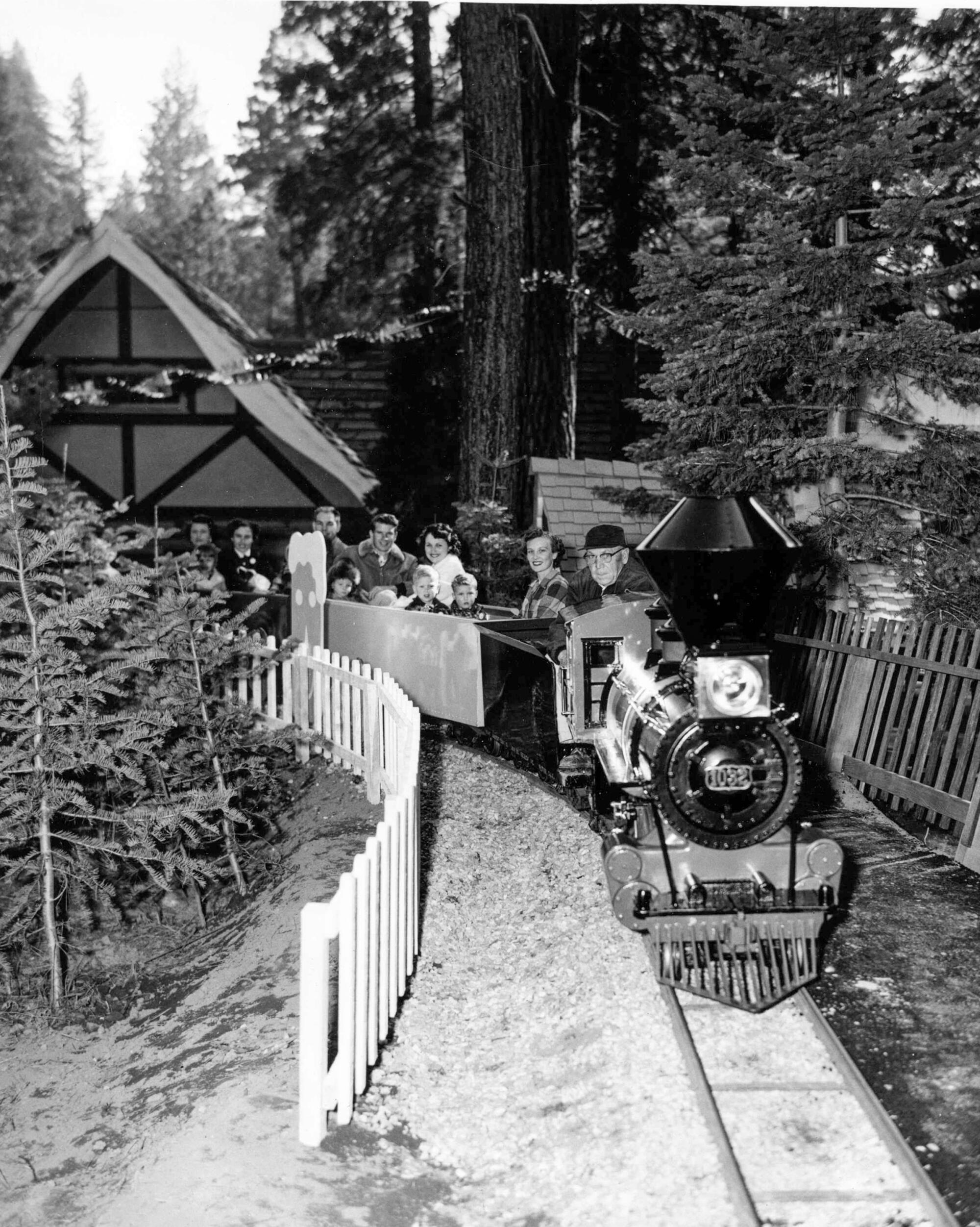
Holland had grand ambitions to franchise Santa’s Village and two other locations would eventually open, one near Santa Cruz and one in the Chicago suburbs. The dream was only briefly realized, as both would close, although the Chicago-area park operates as a separate entity today.
In 1978, Holland’s investor group went bankrupt. Henck and his wife, Pamela, then took over the park, operating it as a tightly run family affair. Pamela, for instance, was known to perform as the Lollipop Lady, who, of course, handed out lollipops to park guests, Henck told The Times in 2006. Henck also revealed that the park had long been a money loser, at least until the family added a carousel and a Ferris wheel and began running television advertisements.
For a time in the ‘80s, Henck said, the park was drawing 180,000 guests per year, but it reportedly fell on hard times in the ‘90s. “The young generation began to over-program their kids to where they had so much stuff to do, and not enough time for a four-hour or longer round-trip drive up to the mountain,” Henck said in 2006. The park closed in 1998, and was sold for $5.6 million to Thomas Plott, who planned to resurrect Santa’s Village.
Plott, however, died in 2005, and most of its movable goods had been previously sold at a private auction. Henck died in 2010, and for a while it seemed as if the obituary had been written on Santa’s Village. “When it’s over, it’s over,” Henck said in 2006.

The Johnsons, at least initially, likely would have agreed with that sentiment. After having built a successful real estate company, the couple saw an opportunity to buy and craft something that appealed to their love of nature and sport (public records state the couple paid $3.75 million for the park).
“We were really big fans of Whistler and going there,” says Michelle of the mountain town near Vancouver, British Columbia. “The whole vibe there is you go mountain biking, you go to the pub and have drinks. We wanted that feel.”
They were met, says Bill, with a public outcry. A flood of letters and comments came in lamenting that they were not going to revive Santa’s Village. He and his wife were ultimately swayed, albeit slowly.
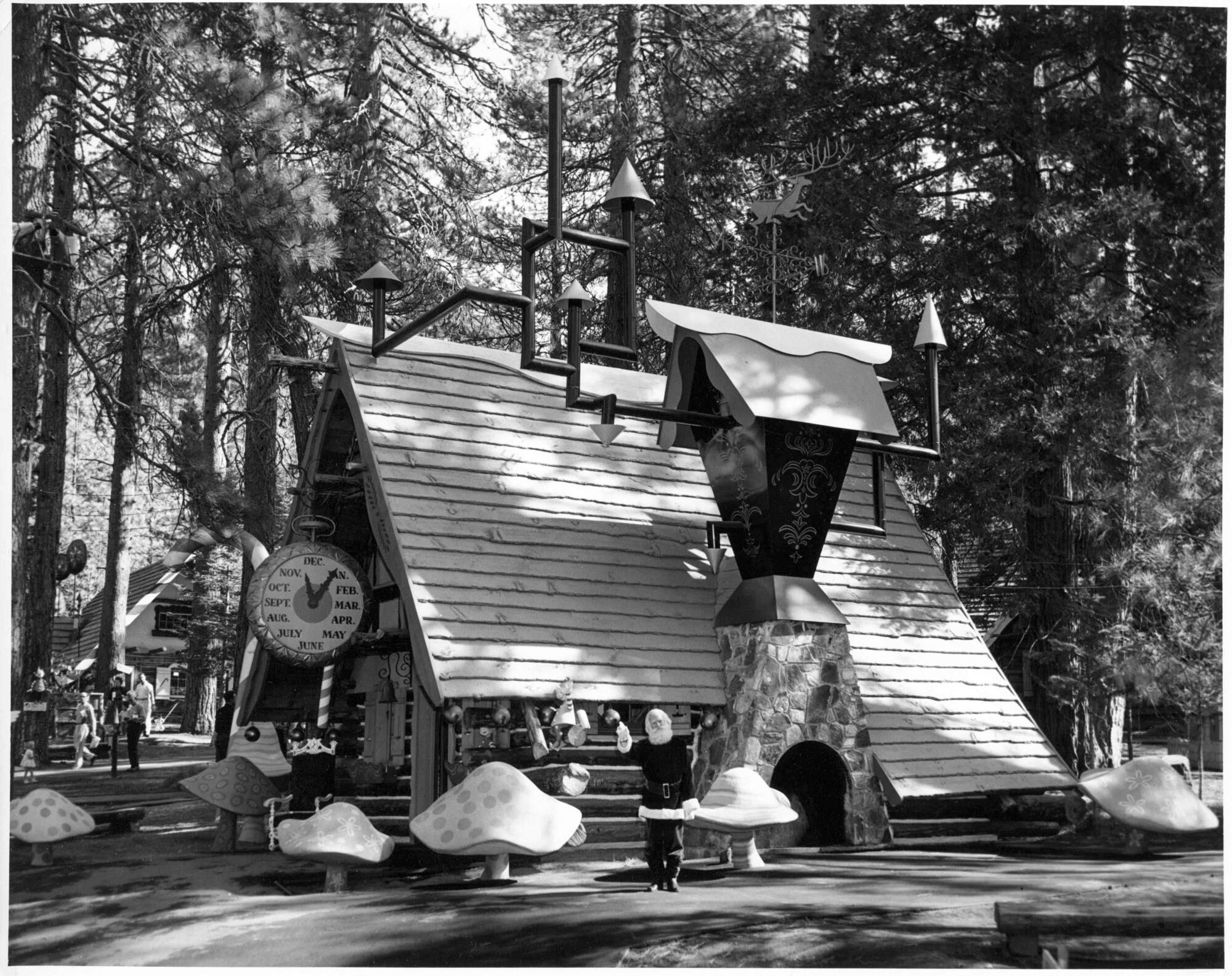
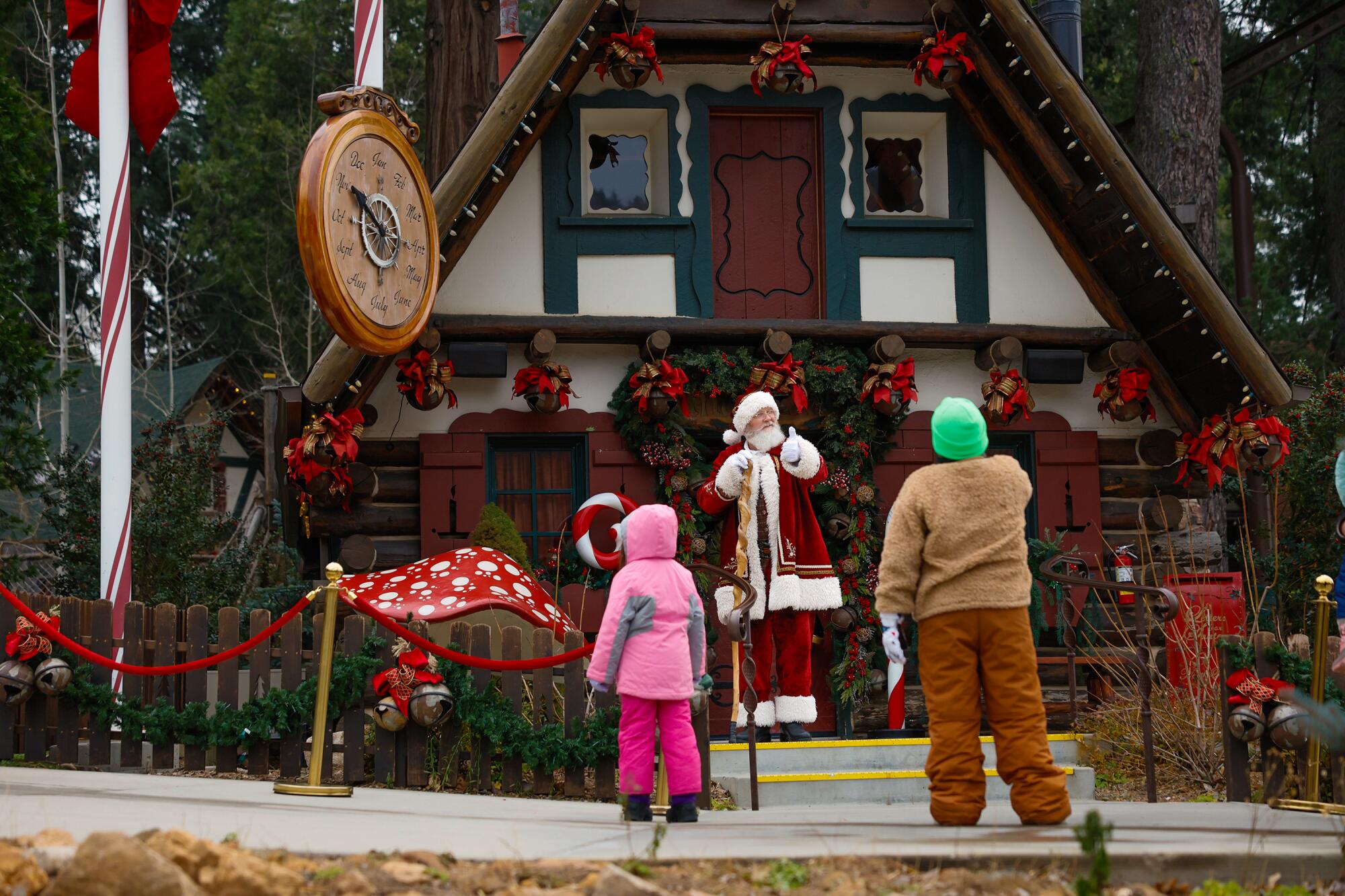
“It wasn’t our idea to bring back Santa’s Village as much as it was the Southern California market,” Bill says. “It was screaming, ‘Hey, this is so exciting! You’re bringing back Santa’s Village!’ And my response was, ‘Yeah, I’m bringing back something that went bankrupt. I don’t know if that’s such a good idea.’ But it curved it. And all of a sudden it took a different turn.”
Drastically. The Johnsons dove into Santa’s Village history, something they were intimately familiar with. It was, after all, Bill’s first job at age 14, when he was a ride operator. They were even able to recover the vintage-style cars that once steered young and old around a path and a tunnel near the front of the park. They considered restoring the attraction, but the track had been destroyed. Instead, they refashioned them around a golf cart chassis and use them to parade characters around the park.
It’s not the only retro touch at Skypark at Santa’s Village. The old carousel barn has been redone into a puppet theater, now featuring original stories from Michelle and the park’s small entertainment team, not to mention hand-crafted puppets by local artisans. And the pathway for the front-of-park car ride is still there, only now it hosts pedal cars and takes guests into an ice cave, spinning a tale about Santa’s dog Arrow, an original creation modeled after the Johnsons’ wolf dog, a fluffy white bear of a creature that looks fit for the Alaskan tundra.
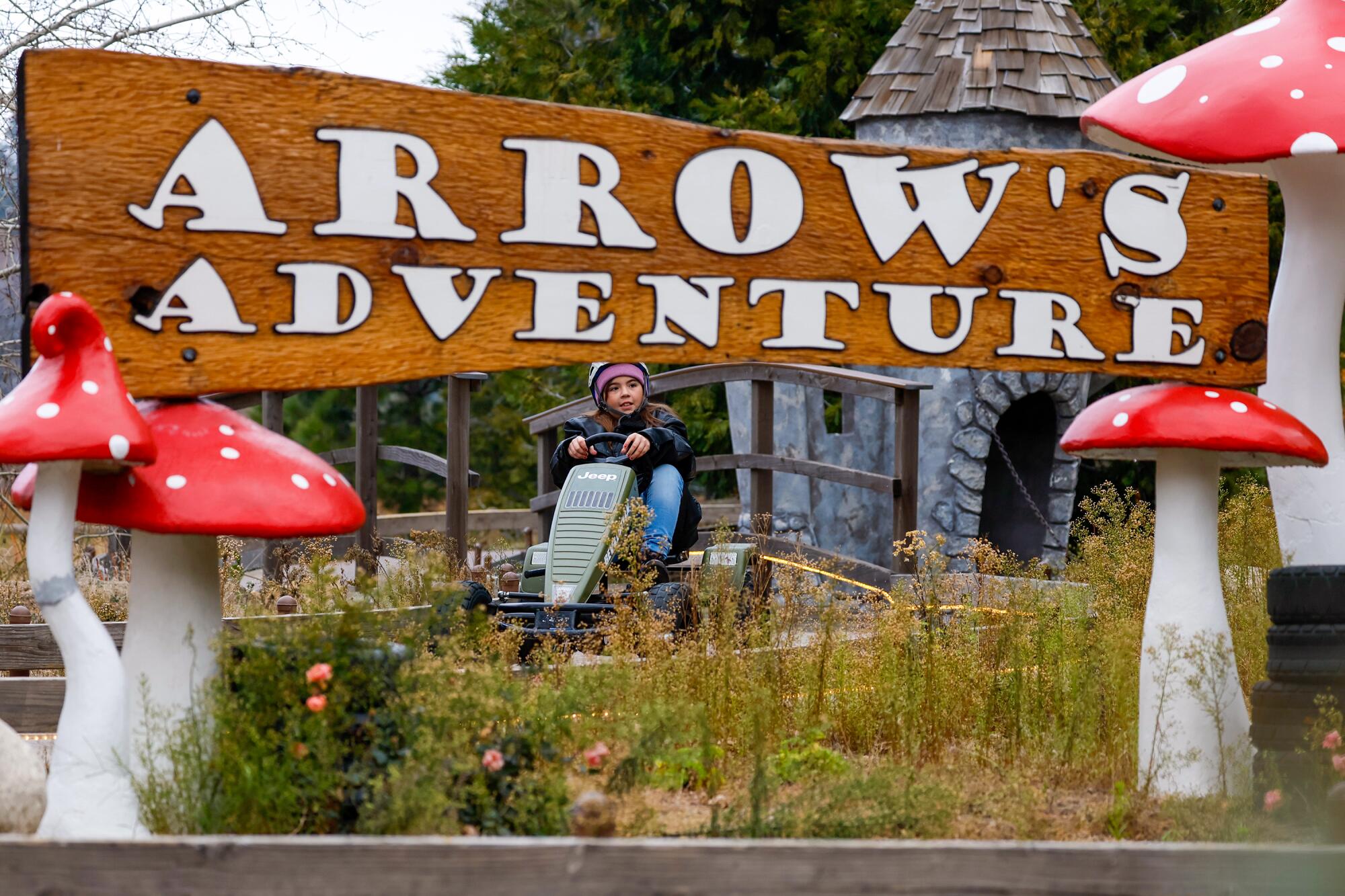
“There’s a lot of things that we do here that are very similar to what they did, and we got that from what we read,” Michelle says. “But then some of it we were, like, ‘no.”
That meant yes to hot chocolate, gingerbread, a playground with a slide and, of course, Santa, but no to, for instance, live animals. Upkeep, says Bill, is too expensive. Additionally, Bill knows firsthand how unpredictable deer can be. He tells a quick aside of when he was 15 and operating the sleigh ride. A deer had broken free from its pen and was blocking the track.
“It was a doe,” Bill says. “She was under 100 pounds. So I got my elf hat with my feather and say, ‘Hang on folks, I need to get the deer.’ So I shut the ride off and I go up to the deer to grab the collar. I reached out, and it reared up and kicked me. I had two hoof prints on my collarbone. I was startled. Everyone on the ride was like, ‘Oh, my gosh!’ The animals here were out of control, and I do believe that’s one of the reasons it was not a sustainable park.”

The Johnsons are modest. The couple recently added a nighttime winter walk, themed to a tale of a tree telling guests about its forest family while dispensing nature facts. It’s a short hike around the top of the park, above pristine grassy wedding grounds. After excitedly talking about how they will add talking tree projections for future seasons, Michelle says, “It’s not as good as some of the ones you’ve probably seen, like at Descanso Gardens. We’re working on it.”
But while the couple is new to the world of themed entertainment, they’ve proven to be fast learners. For one, Skypark at Santa’s Village is heavy on, well, theme. Sleighs here are shown paired with bikes, leaning into the cyclist motif. For those not old enough to ride yet, there’s a trail for balance bikes. The goal, throughout the park, is for it to be active. Where there once was a pad for numerous kiddie rides, it is now a large ice rink, and there are multiple climbing towers, one given an icy look that’s fit for those as young as 18 months.
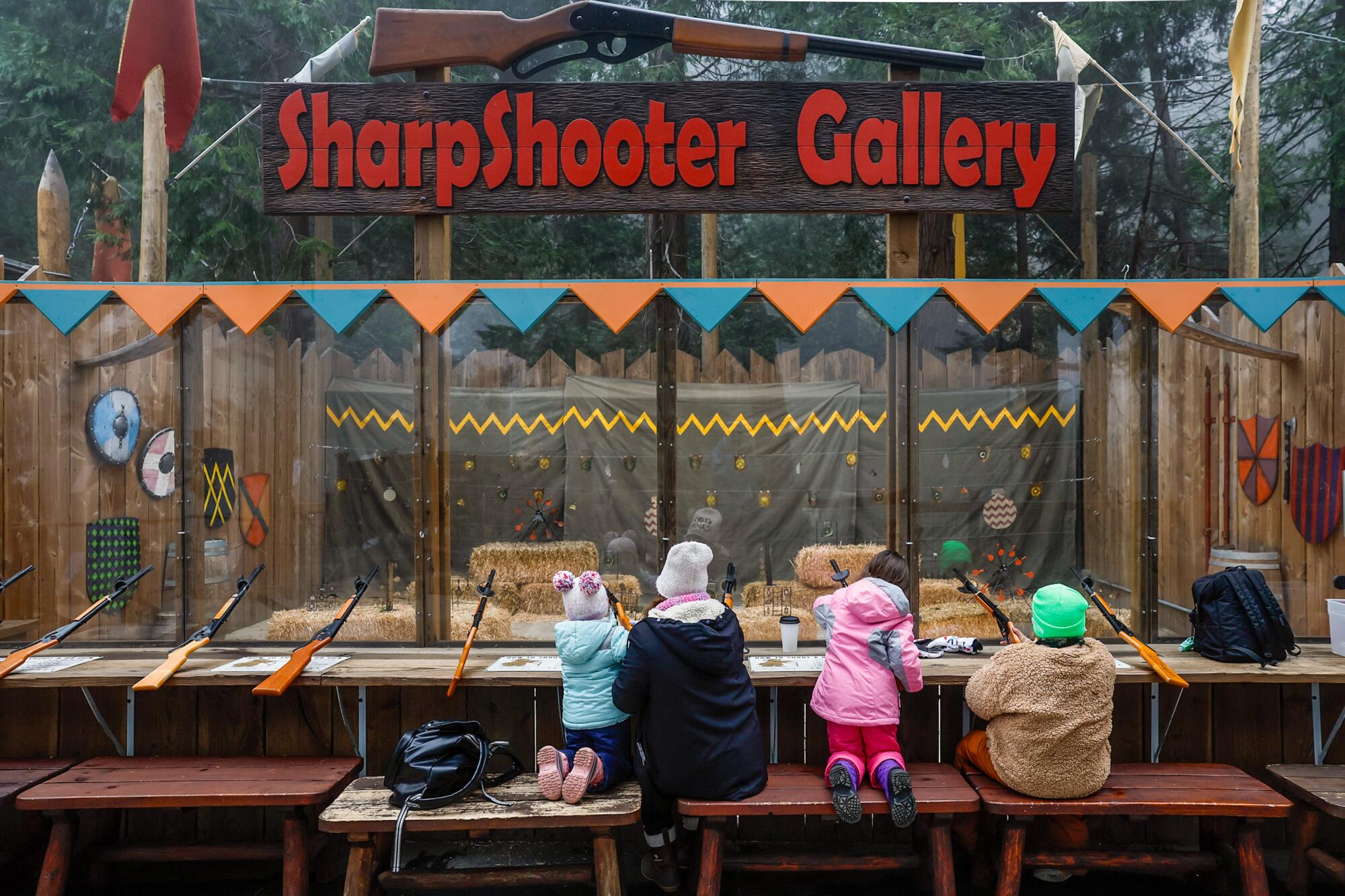
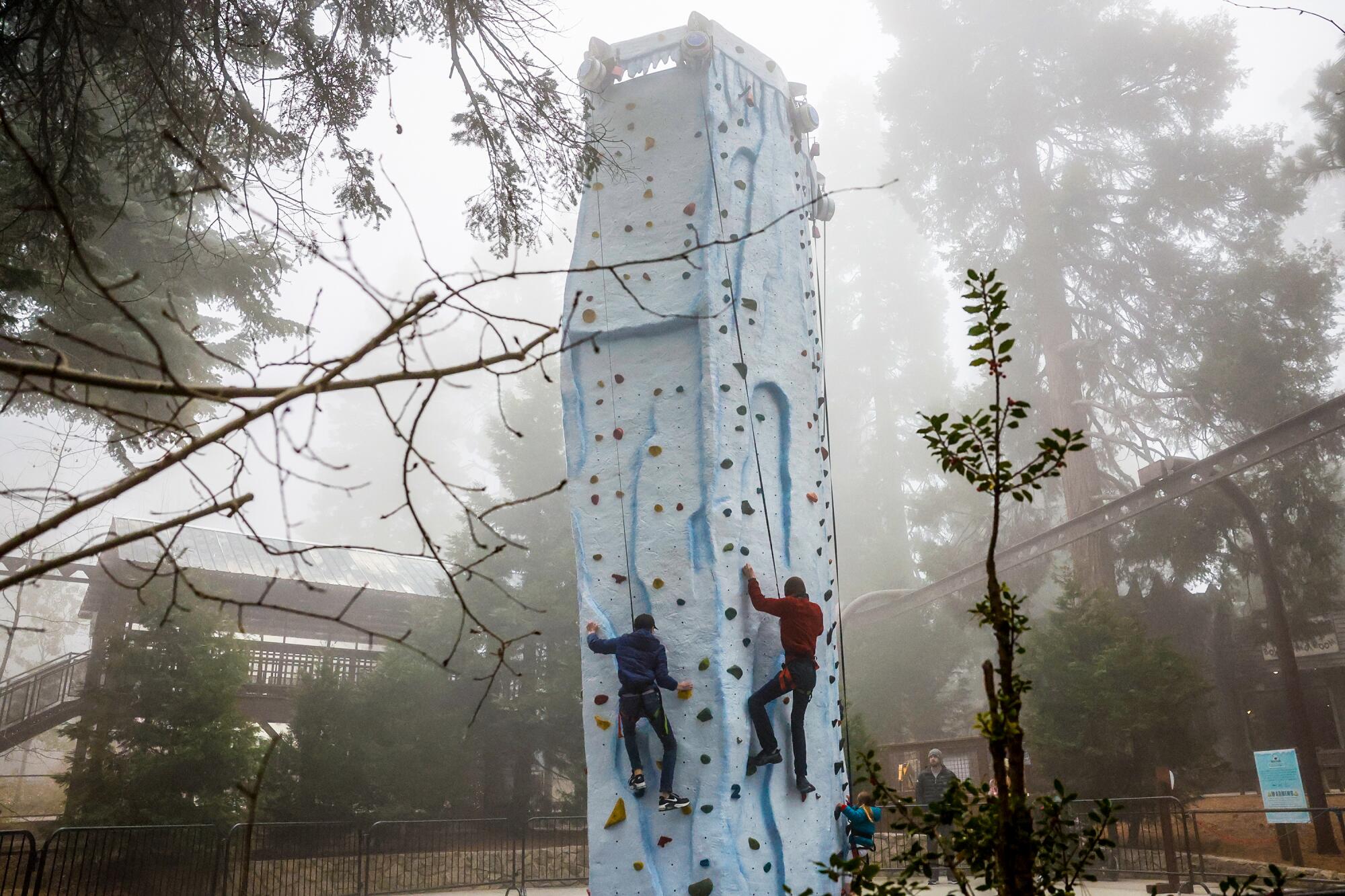
Some of these decisions were made for the Johnsons. While the park sat as a ghost town, the equipment that wasn’t auctioned off wandered off. “When we got the property, all the electrical had been stolen,” Michelle says. “Someone came in here and hooked up the electrical to a truck and ripped it out of the ground. We were left with nothing.”
Michelle says they’ve considered buying a carousel but aren’t sure it fits the mold of the remodeled Santa’s Village. She tears up when discussing the park’s objective, which is to feel a bit old-timey and look like it belongs in the woods. She notes they’ve considered a treehouse and a “nostalgic arcade” but aren’t out to compete with, say, Disneyland.
The recently reopened Adventureland Treehouse Inspired by Walt Disney’s Swiss Family Robinson places its focus on old-fashioned theme park trickery.
“I want Skee-Ball,” she says of the arcade. “The things we did as a kid. We’ve been tempted to do [virtual reality] and all these other things, but that feels fake to me. That may not be the right word, but it doesn’t feel right to put in digital attractions that might not go with the overall vibe. ... We weren’t playing off that theme park idea as much as just a really cool handcrafted vibe. I want everything to feel authentic.”
Kathie Ferkin first visited Santa’s Village in 1955 and recently returned to the park. “It was completely magical,” Ferkin, 76, says. “I could remember some of it as a child, but I was so happy that somebody was doing something with it and keeping the old while fixing it up new. Someone is loving it.”
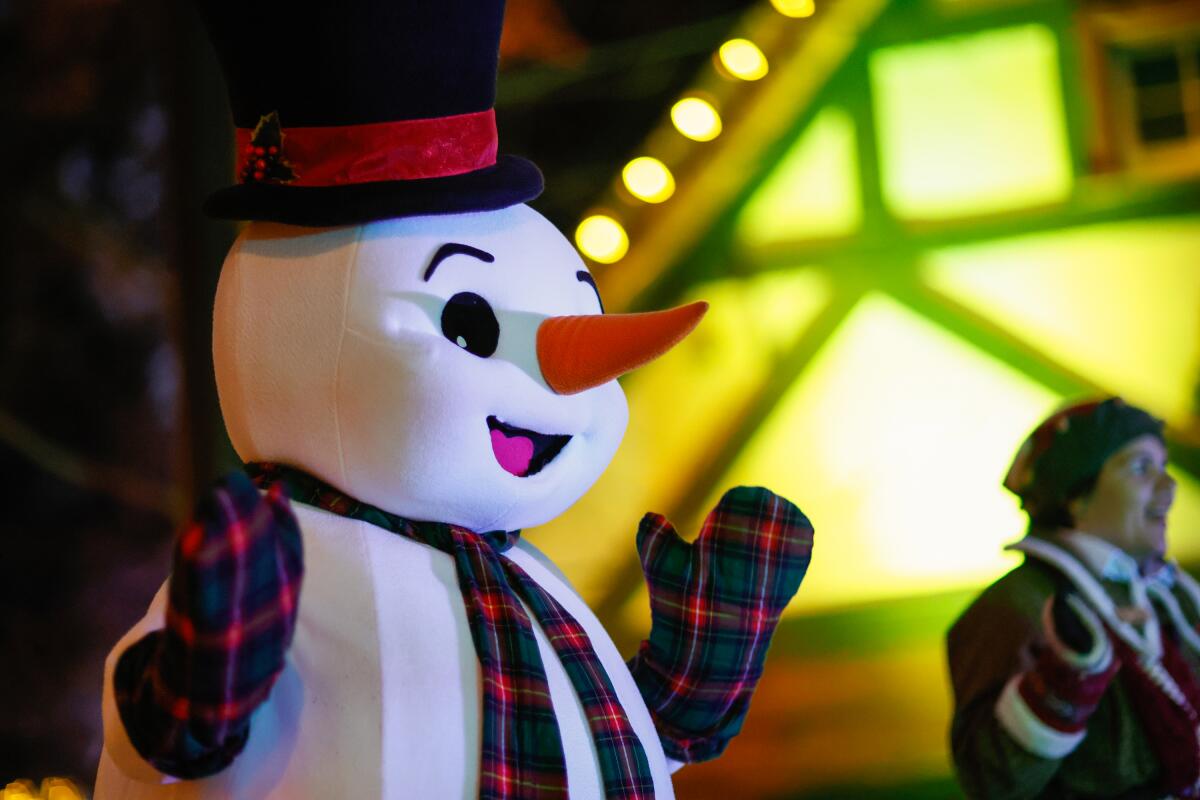
Frosty the Snowman makes his way through Santa’s Village to attend a Christmas tree lighting ceremony. (Robert Gauthier / Los Angeles Times)
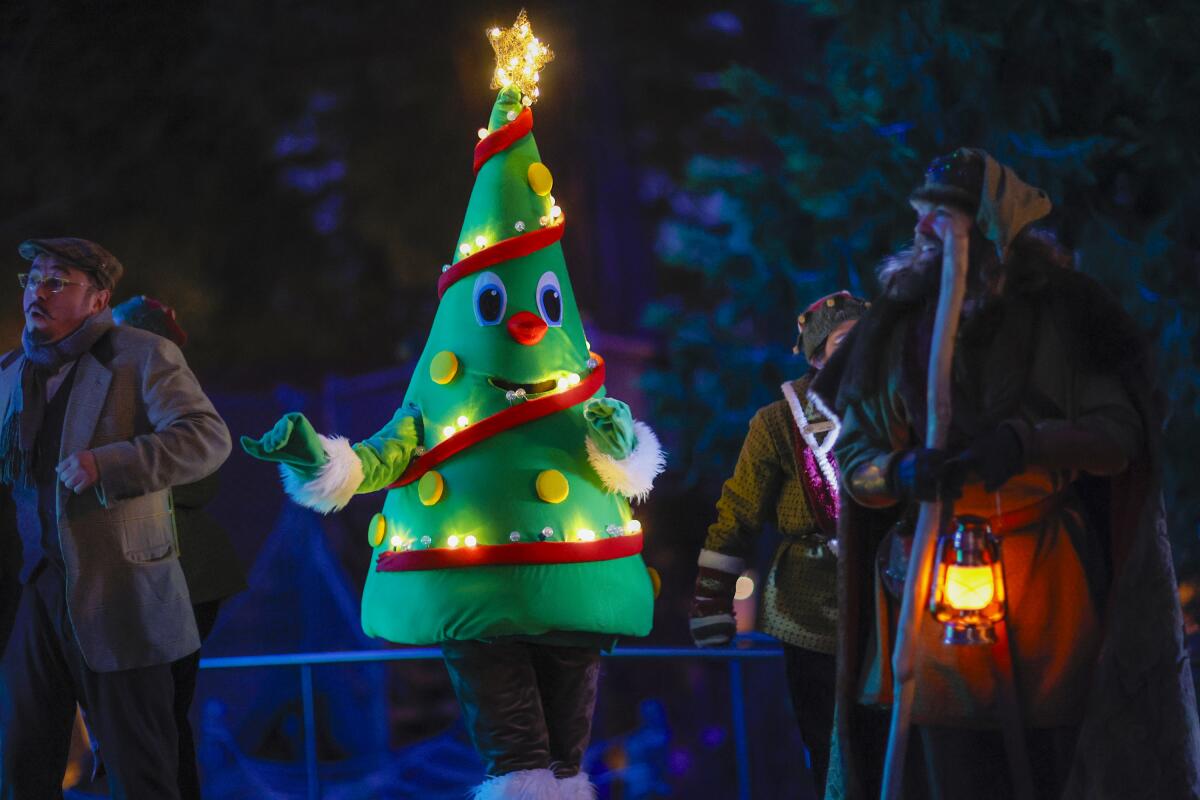
Twinkles the Tree dances with other Northwoods characters during a tree lighting ceremony in Skypark at Santa’s Village. (Robert Gauthier / Los Angeles Times)
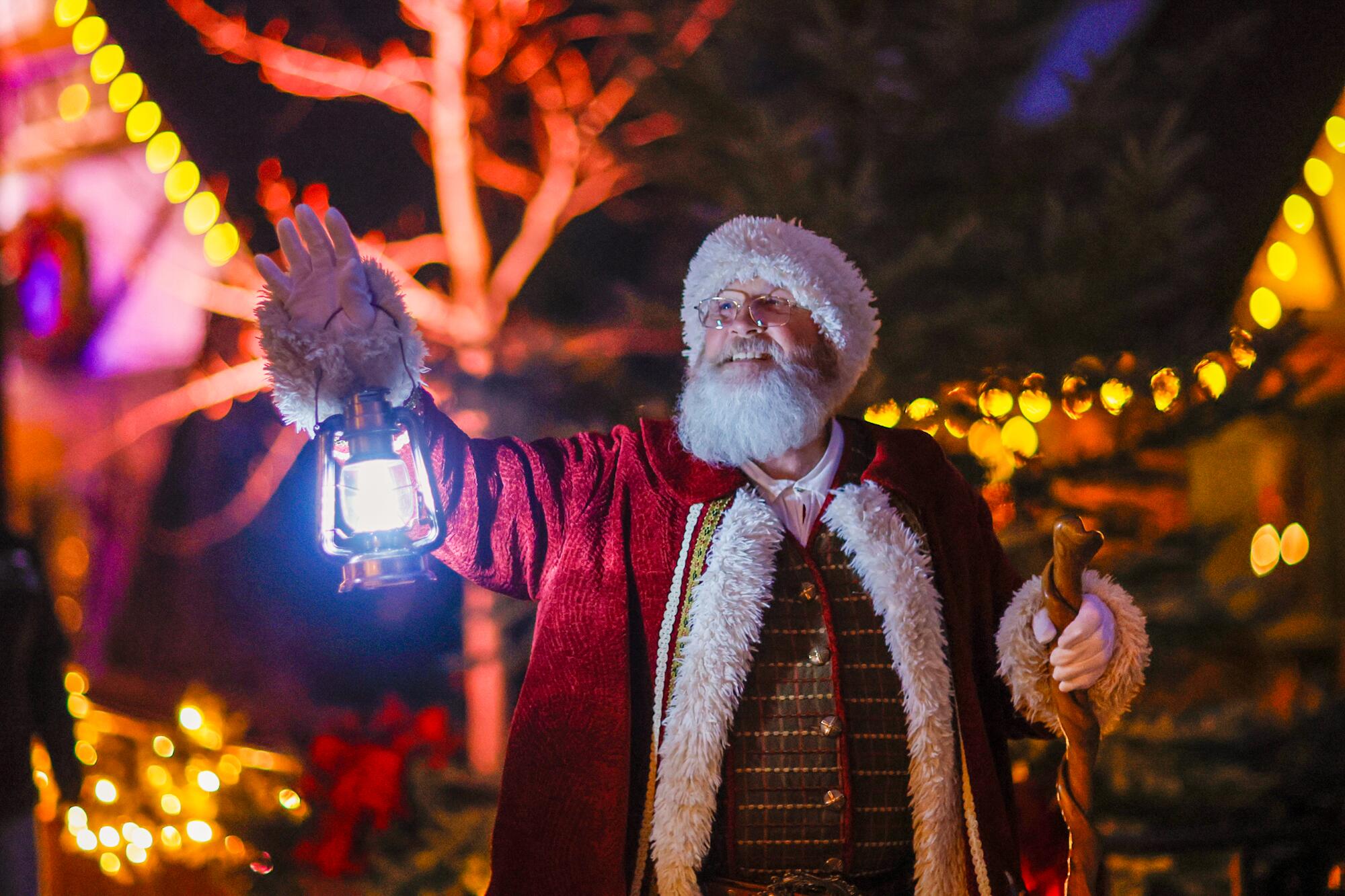
The goal now is for Santa’s Village to help the sustainability of the bike park and vice versa. And the end result is that the Johnsons, once reluctant theme park owners, are now theme park lifers. They note they won’t be breaking even on their investments anytime soon.
“The payback on a park like this,” Bill says, “is a lifetime.”
Next up is the culmination of what’s been a project since the Johnsons took over the park. The track that previously housed the bee-themed monorail will once again be put to use, but this time with custom-built bikes that will hang dozens of feet off the ground. Bill says they tried to outsource the attraction, but themed entertainment companies declined to work on a project with an existing track, forcing the couple to go the do-it-yourself route when it came to ride creation. Final testing, Bill says, with the California Division of Occupational Safety and Health should begin soon.
“If you close your eyes, there would be no way that you would know that you’re not on a bicycle,” Bill says. “Until you open your eyes and you’re 40 feet off the ground. It should be a big deal.”
It’s a thrill ride, but the way the Johnsons like it — that is, it’s people-powered. “You can’t create what was built in the ‘50s. We know it’s not sustainable,” Bill says.
In a way, the refurbished monorail feels like a metaphor for the Johnsons’ journey with Santa’s Village — a head-first trek into not just the unknown but something that could be a little terrifying, maybe even precarious. But 10 years into their investment, the motto these days is to keep pedaling.
Skypark at Santa's Village
More to Read
Sign up for The Wild
We’ll help you find the best places to hike, bike and run, as well as the perfect silent spots for meditation and yoga.
You may occasionally receive promotional content from the Los Angeles Times.
